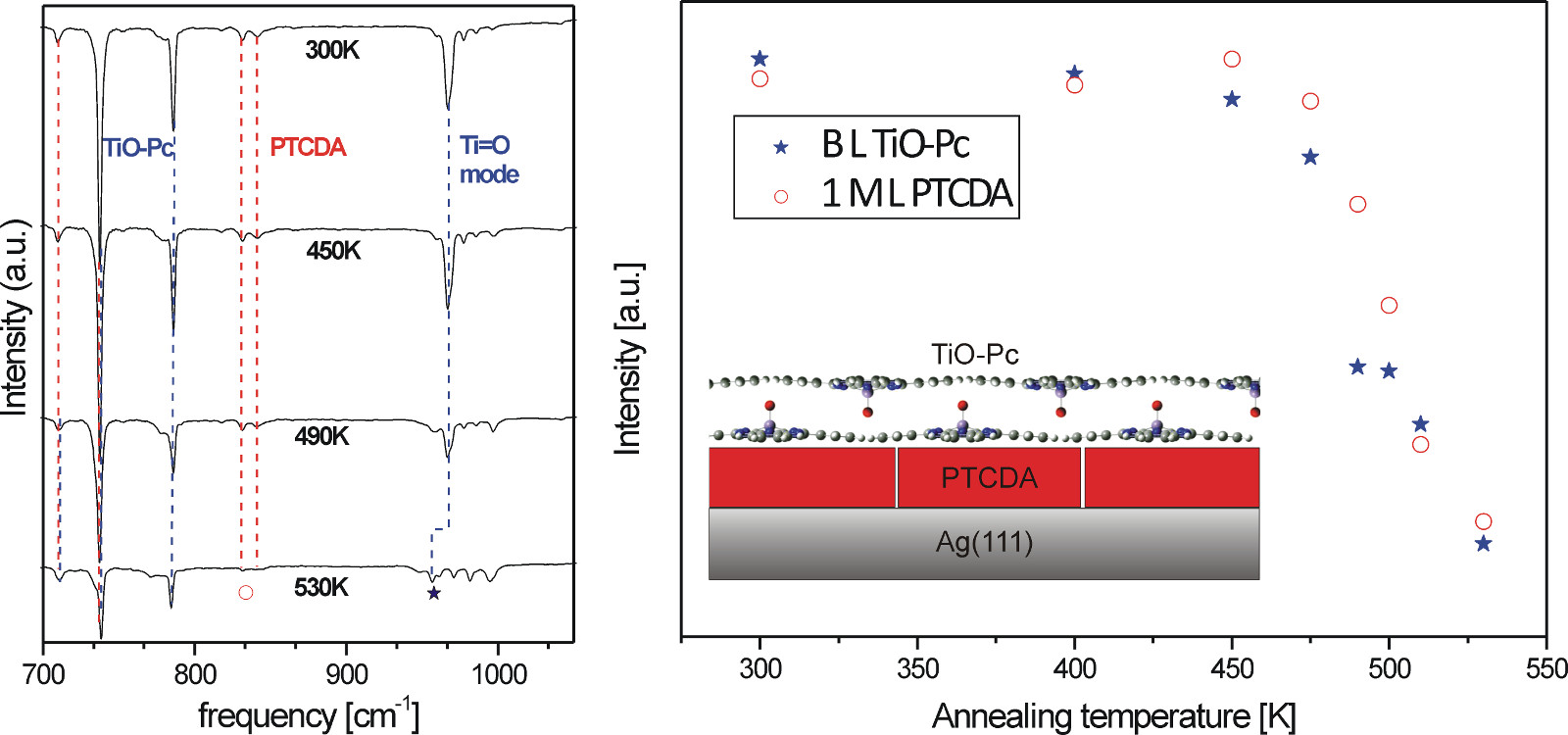
Poster
Vibrational properties of TiO-Pc/PTCDA heterolayers on Ag(111)
Philipps-Universität Marburg, Renthof 5, 35032 Marburg, Germany
Organic molecular heterostructures formed by the combination of titanyl phthalocyanine (TiO-Pc) bilayer with 3,4,9,10-Perylentetracarboxylic dianhydride (PTCDA) layers grown on Ag(111) surfaces are investigated using infrared absorption spectroscopy (IRAS). In order to study the thermal stability of the organic interface, the behaviour of characteristic vibrational modes of both TiO-Pc and PTCDA layers is analysed. Only for temperatures above 450 K indications of intermixing or degradation of the underlying PTCDA/Ag(111) layers are detected, as it is shown in Fig.1. Key for the thermal stability of this heterostructure is the TiO-Pc bilayer, which displays a characteristic "up-down" molecular arrangement that optimizes the dipole-dipole interaction within the bilayer. Additional thermal desorption spectroscopy measurements of TiO-Pc bilayers grown on Ag(111) underline the exceptional thermal stability of this system, which requires temperatures above 500 K to desorb from the Ag(111) surface. Moreover, the coverage dependency of TiO-Pc on Ag(111) was investigated, showing a clearly defined transition between the monolayer and the bilayer regime characterized by distinctly different vibrational modes associated by both regimes. The surface structure of the TiO-Pc layers grown on Ag(111) was also analysed by SPA-LEED. Three different phases that depend on coverage are found in the monolayer regime. First, a 2D-gas phase for low coverage (Θ < 0.7 ML), later a commensurate (4√3×7)rect phase at 0.8 - 0.9 ML, and finally, a point-on-line phase when the coverage approaches saturation.

Fig.1: Left panel: Vibrational spectra of TiO-Pc (blue lines) and PTCDA (red lines) layers grown as heterostructure on Ag(111) recorded after annealing (and recooling to 80 K) to increasingly higher temperatures. Right panel: The temperature dependence of two characteristic vibrational modes of TiO-Pc (stars) and PTCDA (circles) is displayed. Only for temperatures above 470 K a continuous decreasing of the intensity signal is observed, which indicates degradation of the layers, i.e. intermixing or desorption.